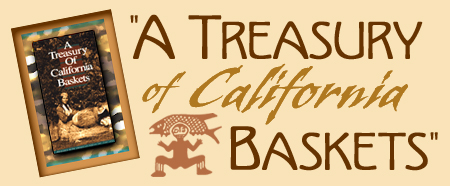
A Treasury of California Baskets
Produced by Tree Of Peace Productions
This video surveys historic baskets woven in California and the rich traditions of the Grandmothers who created them. Chumash weaver Linda Aguilar shows her work and discusses the challenges facing weavers today. Narrator Gregory Schaaf, Ph.D., speaks compassionately about the baskets and the traditions of the Grandmothers who made them.
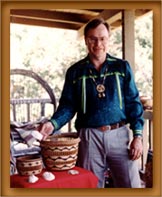
Narrator:
Gregory Schaaf, Ph.D.
"One of my favorite works of art in the collection is this little girls cap from the Achumawi or Pitt River tribe from North Eastern California. They lived between Mt. Shasta and Mt. Lassen, two volcanoes.
And I imagine that over one hundred years ago, maybe one hundred and fifty years ago, a little girl wore this cap to her first ceremonies, where she danced and sang and gave honor to the ancestors that came before her, who inspired her to carry on the traditions, to be passed down from grandmother, to mother, to daughter, to granddaughter, to the generations of the unborn.
The woman who created this basketry cap was many things. Not only was she an artist, but she had to be a botanist. She had to go out and gather the bear grass, the maidenhair fern, the pine roots, the Hazel warps. All had to be gathered at the proper time of the year, and all had to be prepared with love and care. Also, she had to be a chemist, because materials were dyed, to create the maximum in intonation. Furthermore, she had to be a poet, because each work of Indian art has a balance, a meter, a symmetry, a rhythm. And finally, she had to be a mother, a mother who cared about the future of her daughter, introducing her daughter into tribal society.
To me, this basket symbolizes the essence of American Indian art. A tradition which stretches many tens of thousands of years,back to the dawn of creation, and which is still alive today, and through our appreciation, will survive for generations and generations to come."
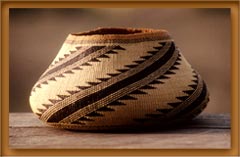
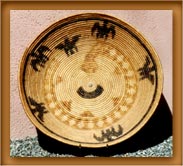
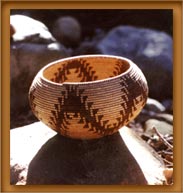
Linda Aguilar,
Chumash
"For gathering you don’t just go out there with a weed wacker and cut the plants. You go and talk to the plants and you give an offering, and you do it in a very respectful way and you just take what you need.

It’s very important for me to carry on some of the traditions. Hopefully some of the younger people will get the same feeling. I’m seeing a lot more younger people interested....there’s something going on now and people are starting to be called back to their roots and traditions, and that’s good."
